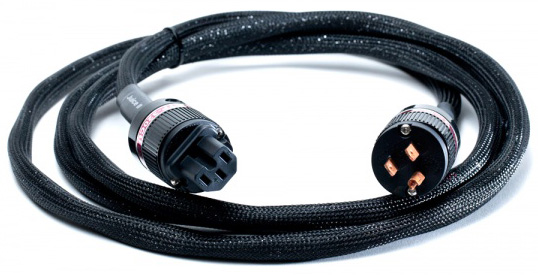Alex and Nina Sventitsky are two of the most charming people I have met in the audio biz. If you want to get excited about music and getting the most musical enjoyment out of your system, just spend some time talking to them and even more listening to music with them. Year after year, show after show, they join with other like minded people to have some of the most fun rooms to visit and some of the best sounding rooms.
Back in 2014, it was my privilege to review the WyWires Juice HC Power Cords. I started that review by telling the story of an experience from decades ago where I came to understand that different power cords make a difference in how a system sounds. It was about the same time when my audio-bud, Steve Woolsey, called me one day. He was very excited about the difference that replacing his stock power cords with Powersnakes from Shunyata Research had made in his system. I think they were called Black Mambas and cost around $400. What was even more unbelievable was that they made a power cord called the King Cobra that was $1,000. I drove a couple of hours to Steve’s house to hear if they made any difference. I couldn’t believe it; they made a very significant difference, and for the better, I might add. So, I started down the power cord rabbit hole. Well, now it’s over thirty years later, and people are still making different sounding power cables and like everything else in audio they have gotten a lot more expensive.
Though I know that to many it may seem completely crazy to even spend $500 for a custom power cord, it turns out that some high-end power cords may represent one of the best bang-for-the-buck changes you can make in your system. Now I have the chance to listen to the Wywires Platinum Juice II power cords. First, I want to say how thankful I am that they weren’t so thick or stiff to be dangerous of pulling light weight components off the shelf. They were flexible enough to be easy to hook up and position. WyWires use Litz wire in their power cord in an asymmetrical Litz bundle, which they say actually improves image focus, soundstage size and “openness” and helps to preserve the presence and scale of the original performance.

